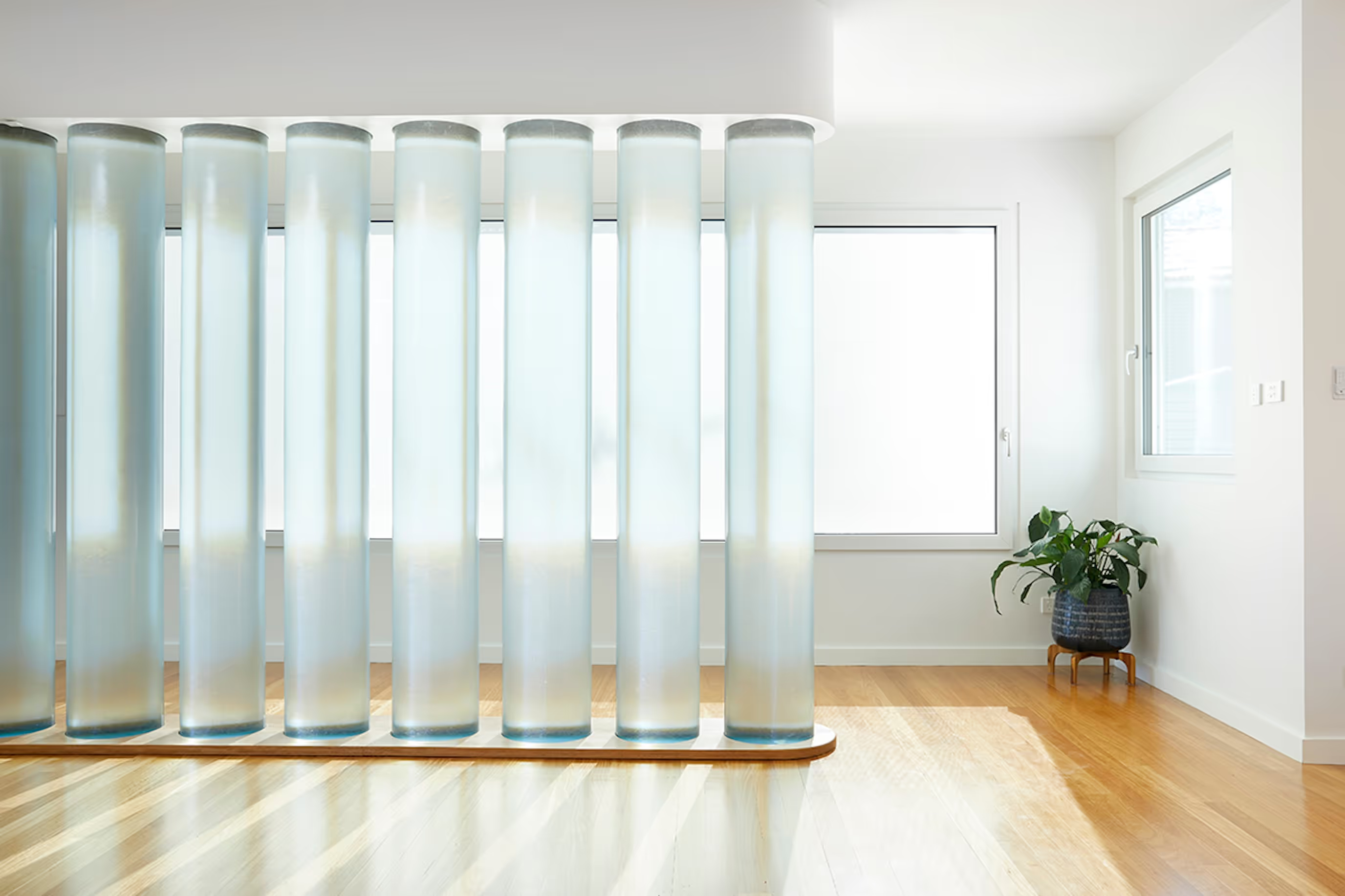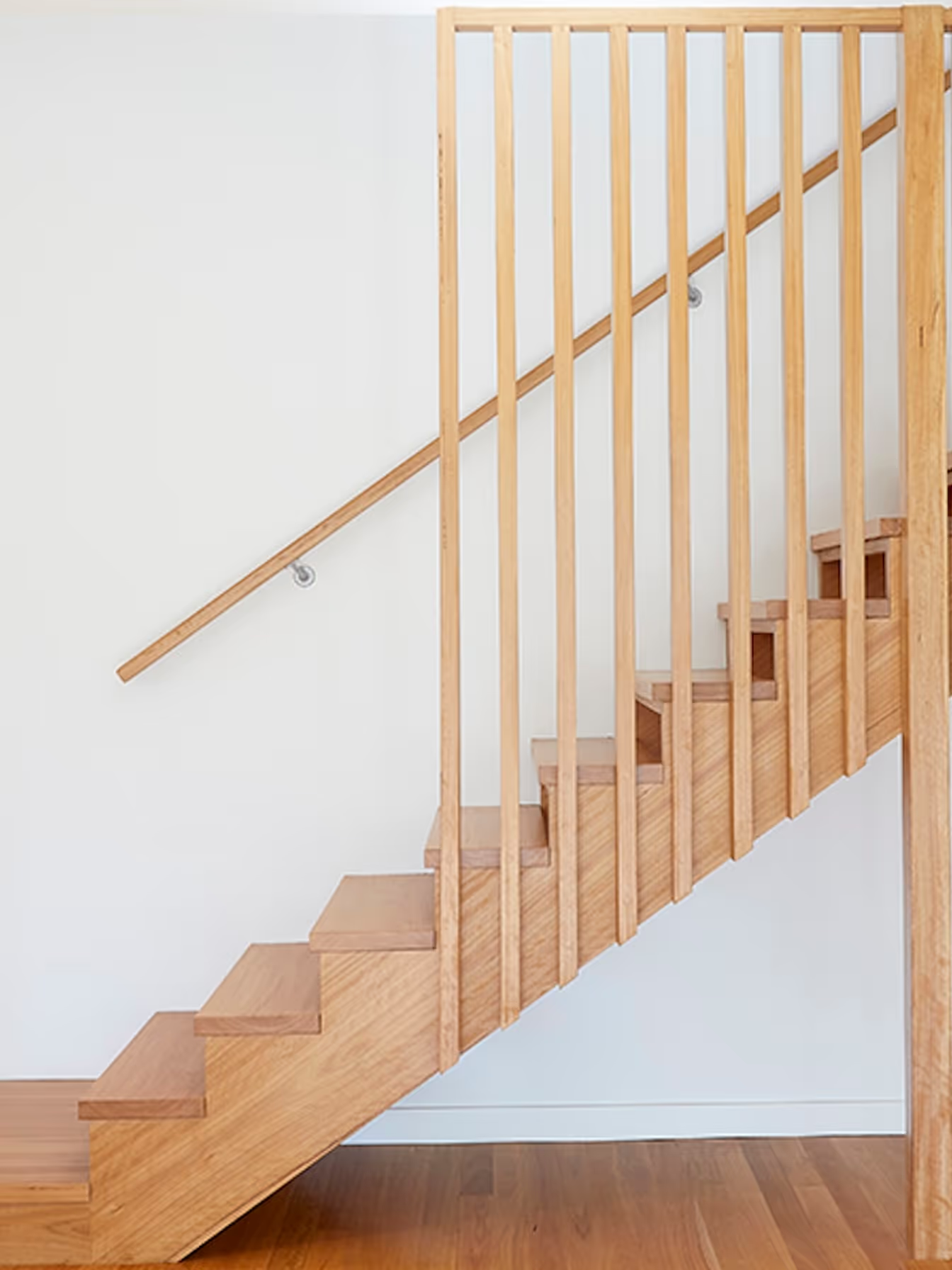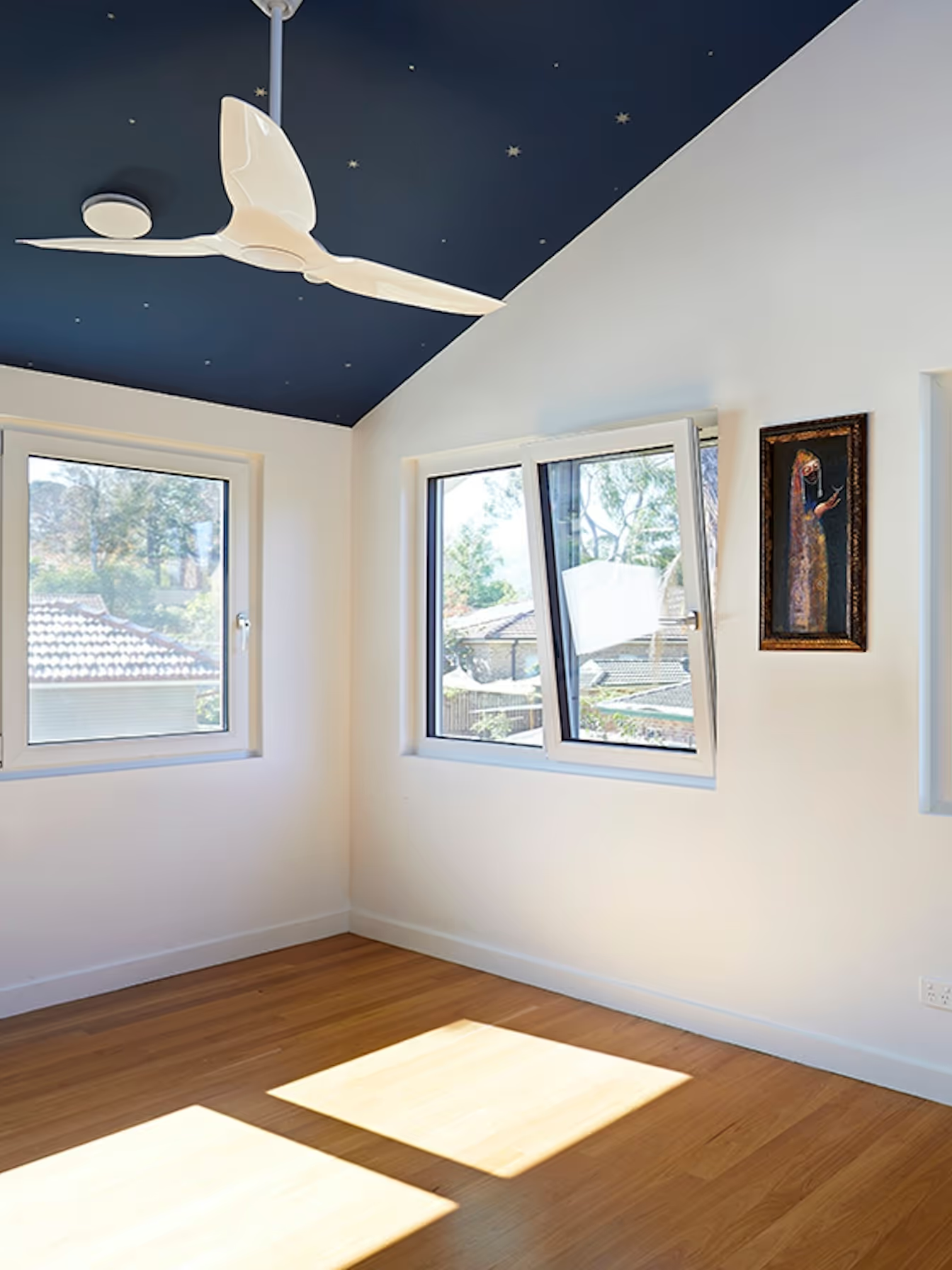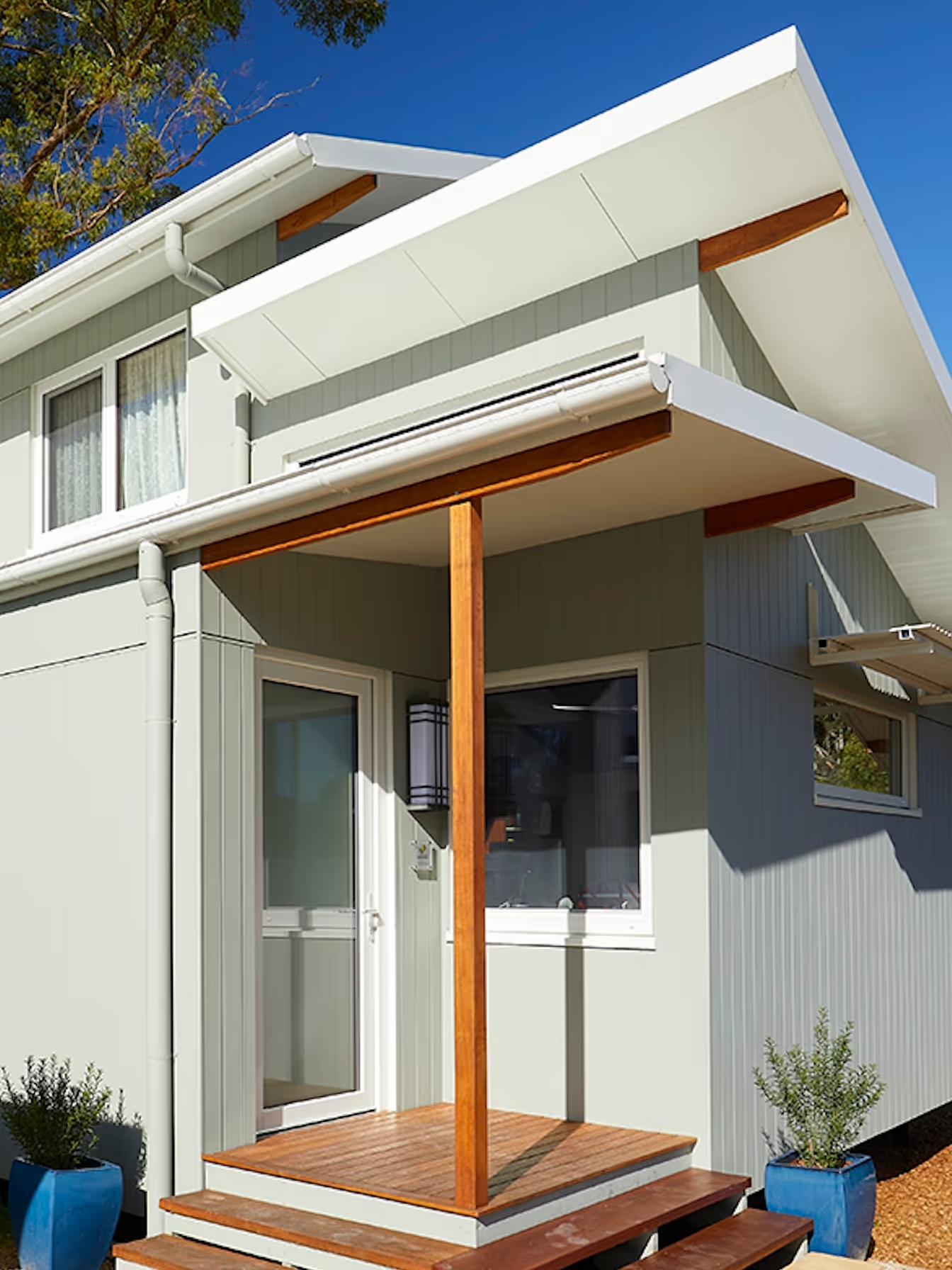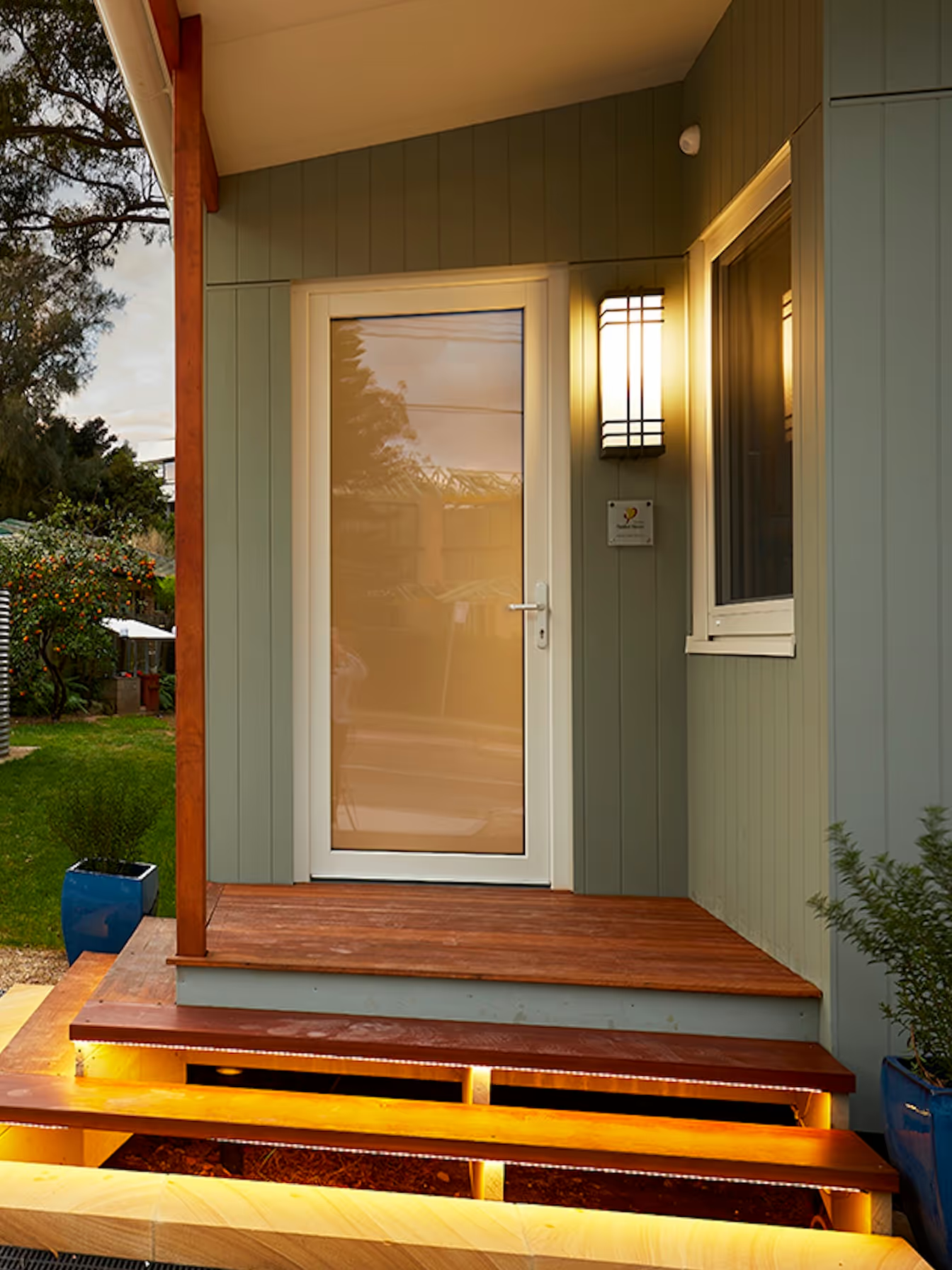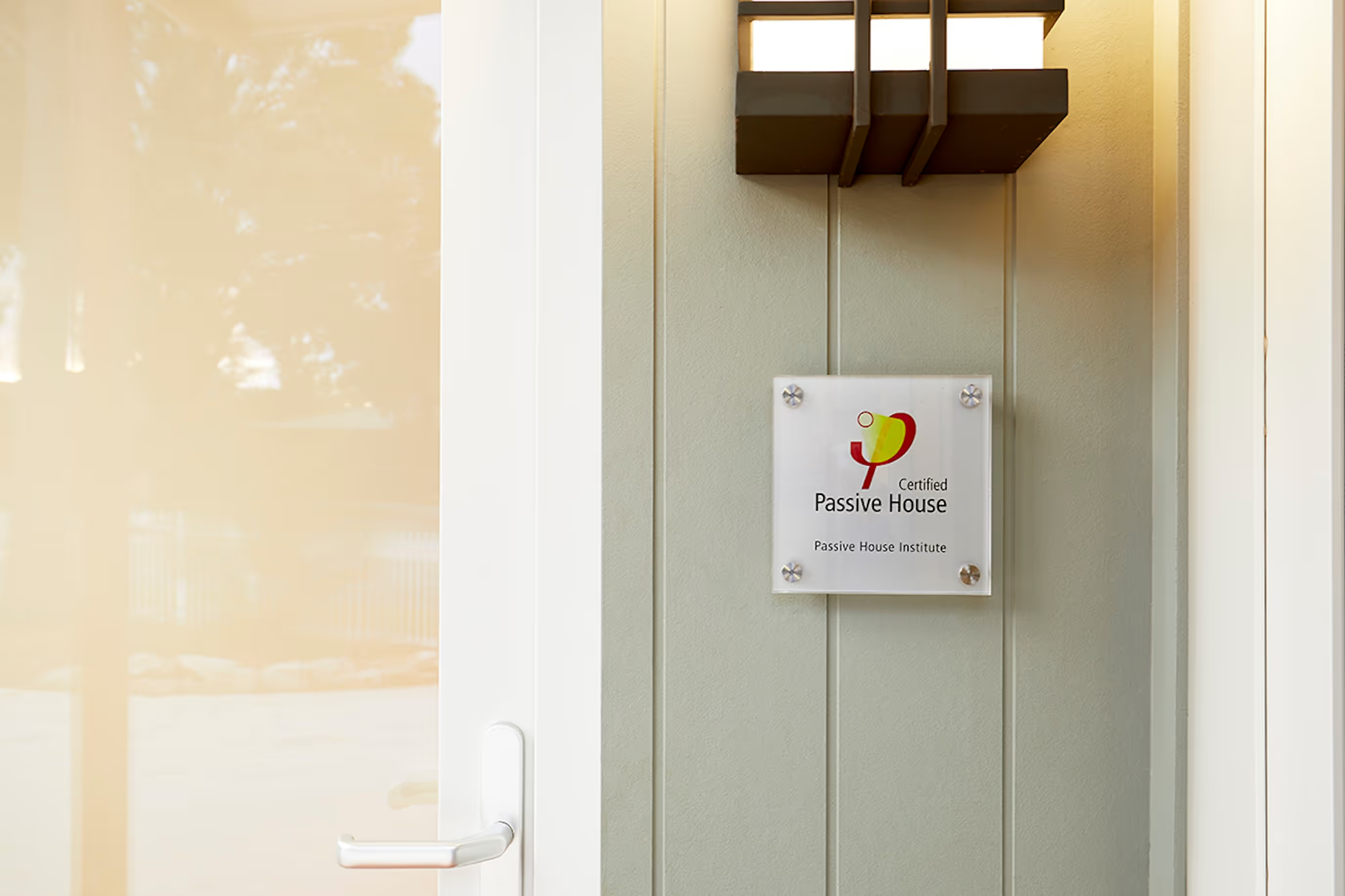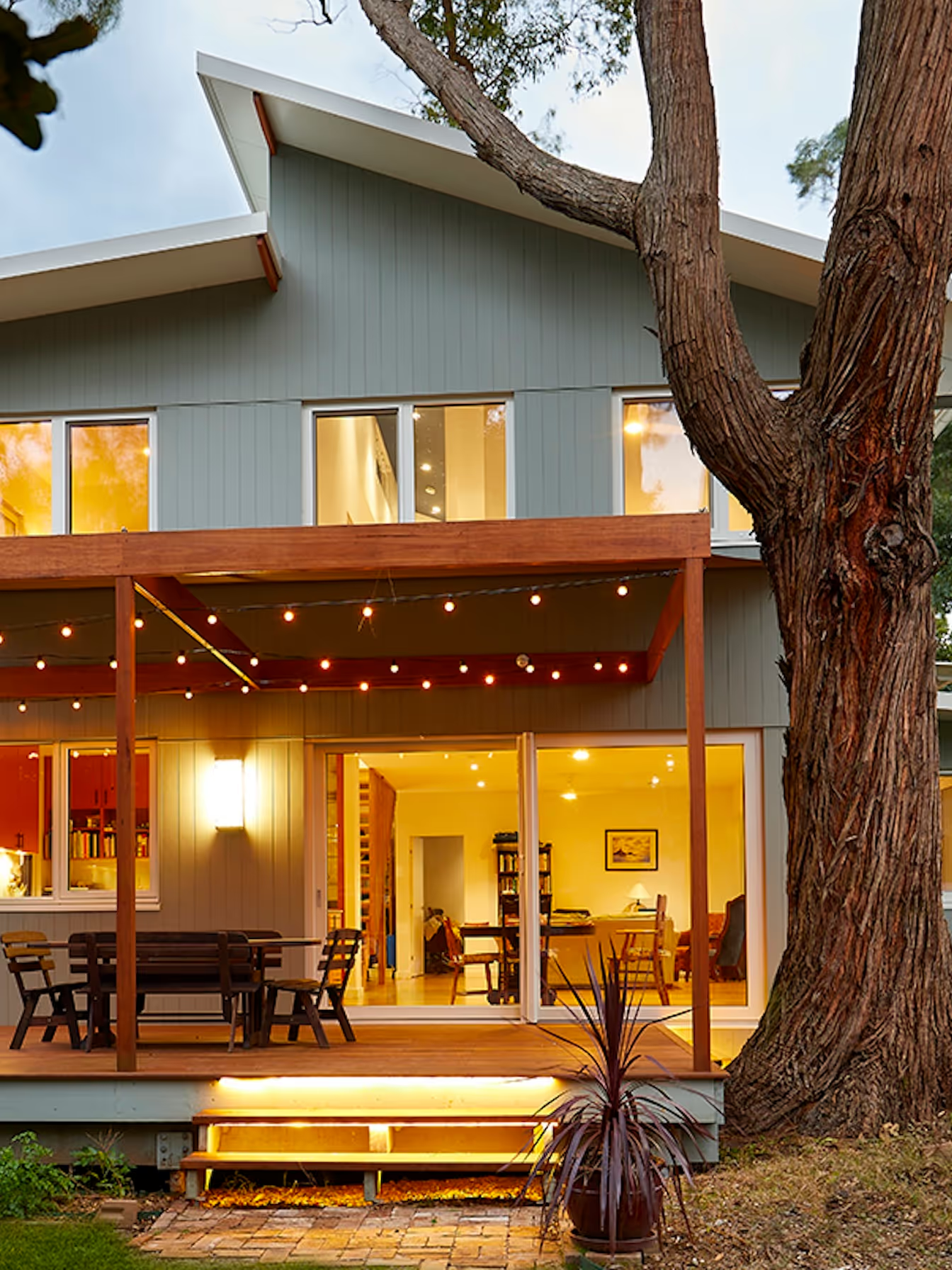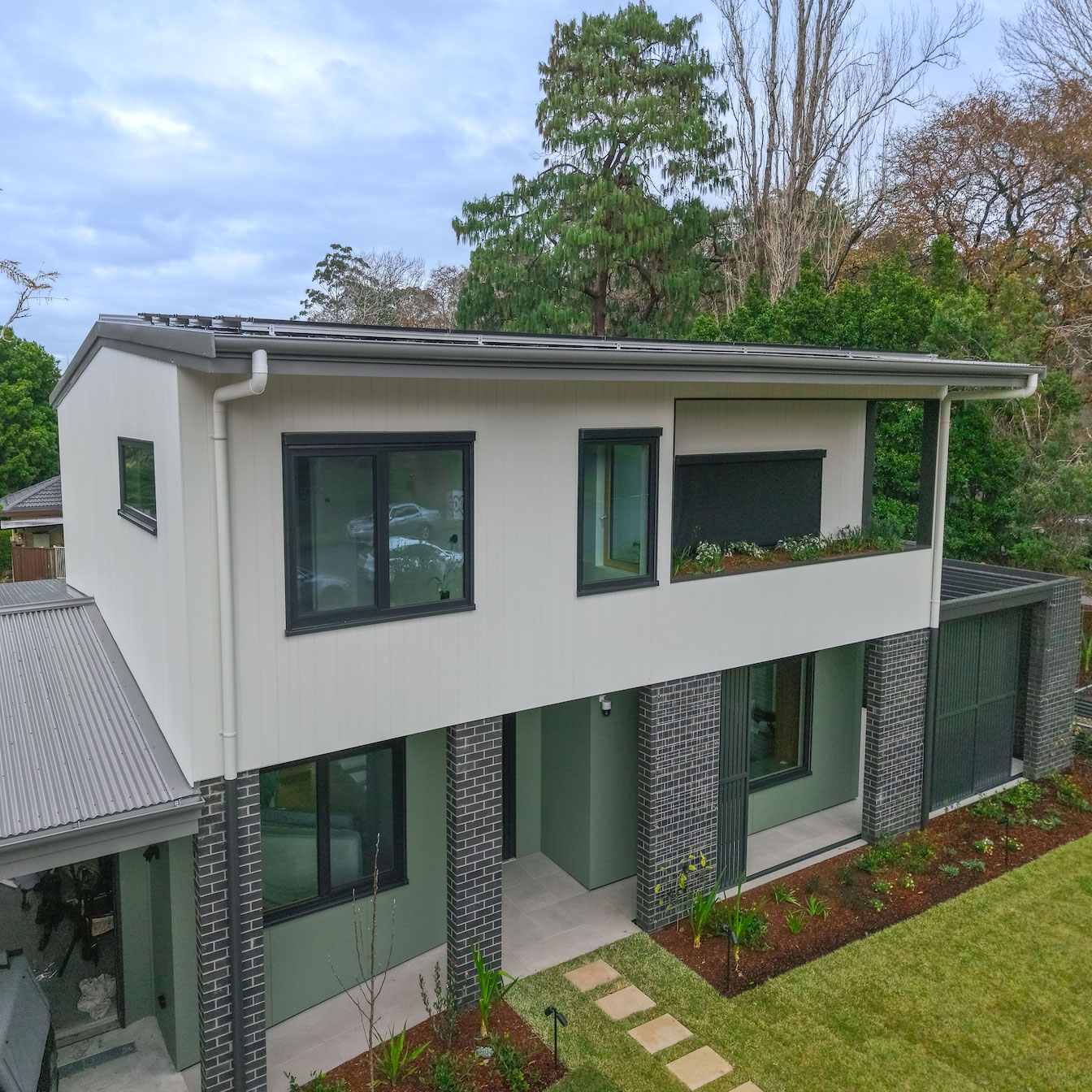
The quality materials and thoughtful design that go into a Passivhaus make this home a calm and peaceful refuge from the noise and air pollution outside.
Through careful design optimisation, Thornleigh was built to the Passivhaus standard for less than was initially quoted for a passive solar design*: all the more remarkable given it was Sydney’s first certified Passivhaus. This home is tucked on a wedge of land bounded by a busy road and a train line.
A dilapidated cottage made way but a magnificent tallowwood tree at the geometric centre of the site became a focal point for the design. The two-storey 160m2 (TFA) house has three bedrooms, a study/guest room and two bathrooms.
The house is built on a suspended floor that rests on steel screw piles. The absence of concrete reduces the carbon emissions associated with materials and construction and also avoids stressing the roots of the tallowwood. The deck wraps around the tree and large lift and slide doors connect the house to the rear yard. There’s a seamless physical transition when the weather is appealing while the visual connection to nature is available from every living area.
Glazing was key to delivering such a peaceful home that maintains a comfortable indoor temperature year round. Importing triple-glazed uPVC windows contained costs while their aluminium external skin increases durability and reduces maintenance. They provide outstanding acoustic and thermal benefits. Meanwhile, the mechanical ventilation system provides fresh, filtered air 24/7 so opening windows is a choice not a necessity.
Preventing overheating in summer was a key goal in this climate and Envirotecture carefully calculated the size and position of glazing on each face of the house. The architects’ deep experience with passive solar principles assisted in designing a form that responds to the sun path across the site, maximising solar gain in winter while preventing overheating in summer. The unobtrusive shading comes in many forms, such as roof overhangs, window shutters and retractable shading blinds.
The large north-facing windows invite in low winter sun that diffuses through a series of translucent water cylinders. This cuts any glare and creates a delightful soft light while the cylinders simultaneously screen the entrance from the main living area and help buffer the internal temperature.
For more technical detail, see project #6100 on the PHI Passive House database.
*This project formed the basis for a research project in 2019 exploring cost premiums for building in Sydney to the Passivhaus standard at that time. The research findings are available here.
